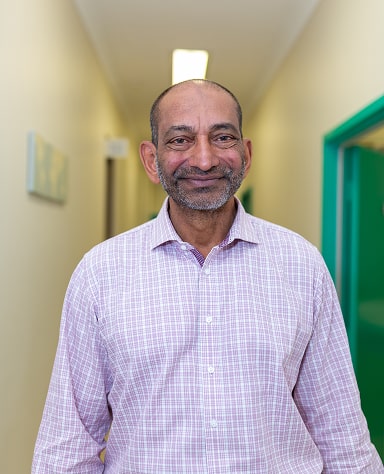Table of Contents
A vasectomy reversal is a surgical procedure that reconnects the vas deferens, allowing sperm to return to the semen. The two main techniques are vasovasostomy, which rejoins the severed vas deferens, and vasoepididymostomy, which connects the vas deferens to the epididymis. Men often choose reversal due to new relationships, changes in family plans, or the desire to have more children later in life.
Success Metrics of Vasectomy Reversal Surgery
The success of vasectomy reversal surgery is measured by two key metrics:
- Patency Rates:
This refers to the likelihood of sperm returning to the ejaculate after surgery. Patency rates usually range from 60% to 97%. - Pregnancy Rates:
This measures the chance of achieving conception following the procedure. Pregnancy rates vary between 30% and 76%.
While a high patency rate indicates the presence of sperm, it does not always result in pregnancy. These success metrics depend on several factors, such as the time since the initial vasectomy, surgical techniques, and the fertility health of both partners.
Factors Influencing Successful Vasectomy Reversal
Several factors influence the success of vasectomy reversal surgery:
- Timing Since Vasectomy:
Reversals performed within 10 years of the vasectomy have higher success rates. Success declines significantly after 15 years due to potential scarring or blockages. - Surgical Technique:
Vasovasostomy (direct reconnection) has higher success rates compared to vasoepididymostomy (bypassing blockages). - Doctor’s Skill and Experience:
A skilled doctor is crucial, particularly for complex procedures like vasoepididymostomy, which require advanced microsurgical techniques. - Male Health Factors:
Sperm health, the presence of scar tissue, and blockages in the reproductive tract can impact success. - Female Fertility Factors:
The female partner’s age and overall reproductive health are important, as fertility naturally declines over time.
Surgical Techniques and Outcomes
Vasectomy reversals are performed using two primary surgical techniques: vasovasostomy and vasoepididymostomy.
Vasovasostomy is a simpler procedure, reconnecting the severed ends of the vas deferens to allow sperm flow. According to a study, this technique resulted in high success rates, with patency rates ranging from 90% to 96% and pregnancy rates between 46% and 54%.
In contrast, vasoepididymostomy is a more complex procedure used when blockages are present in the epididymis. It involves connecting the vas deferens directly to the epididymis. In one study, this technique achieved an overall patency rate of 76.3% and a live birth rate of 34.8%.
Common Myths About Vasectomy Reversals
There are several misconceptions surrounding vasectomy reversals. Understanding the facts can help manage expectations and provide a clearer perspective on the procedure. Below are some examples:
- “Reversals are always successful.”
Success rates vary based on factors like the time since the initial vasectomy, the surgical technique employed, and the fertility health of both partners. While many men achieve patency, this does not always result in pregnancy. - “Reversals are only effective if done immediately after a vasectomy.”
Although earlier reversals generally have higher success rates, procedures performed even after 15 years can still be successful. However, factors like scar tissue formation and partner fertility influence overall pregnancy rates. - “Reversal is a quick option.”
A vasectomy reversal is a surgical procedure that requires recovery time and follow-up care. Patients may experience discomfort and swelling that require rest and limited physical activity for several weeks. Regular follow-up appointments are also important to monitor healing and assess the procedure’s success.
Post-Surgery Expectations
After vasectomy reversal, patients can expect a recovery period of one to two weeks, during which mild discomfort, swelling, and bruising are common. Most men can resume light activities within a few days. However, strenuous exercise and heavy lifting should be avoided for at least four weeks. Additionally, sexual intercourse is usually safe after three to four weeks, depending on individual healing.
Moreover, follow-up care is vital, including semen analysis to monitor sperm count and assess fertility progress. It’s also important to manage emotional expectations, as pregnancy may take several months or longer to occur, even with successful surgery outcomes.
Final Thoughts
If you’re considering a vasectomy reversal, consulting with a doctor is essential to evaluate your unique situation and discuss potential outcomes. They can provide personalised advice based on factors like the time since your initial vasectomy and overall reproductive health. For further information or to schedule a consultation, explore reputable resources and professional medical websites. By understanding all aspects of the procedure, you’ll be better prepared to explore your options with confidence and realistic expectations.
Frequently Asked Questions
Got a question we missed? Contact Us
What is the success rate of vasectomy reversal?
The success rates of vasectomy reversals are measured in two ways:
- Patency Rates:
This refers to the presence of sperm in the semen after the procedure. A successful patency rate indicates that the vas deferens has been successfully reconnected, allowing sperm to pass through. - Pregnancy Rates:
This measures the likelihood of achieving a natural pregnancy following the reversal. A higher pregnancy rate indicates a greater chance of conception following the procedure.
The specific outcomes can differ depending on the surgical technique used, with vasovasostomy generally having higher success rates than vasoepididymostomy. Other influencing factors include the time since the initial vasectomy, the doctor’s skill, and both partners’ fertility health.
What factors influence the success rate of a vasectomy reversal surgery?
Certain factors affect the success rates of vasectomy reversals, including:
- Time Since the Initial Vasectomy:
Success rates are higher when the reversal is done within 10 years of the original vasectomy procedure. Longer intervals can reduce the likelihood of a successful outcome. - Condition of the Vas Deferens:
Healthy vas deferens tissue with minimal scarring improves the chances of sperm being present in the semen after surgery. - Blockage Location:
Blockages closer to the epididymis or scrotum may require more complex microsurgical techniques, influencing results. - Female Partner’s Age and Fertility:
The partner’s age and overall reproductive health significantly determine pregnancy rates after the vasectomy reversal procedure. - Presence of Sperm in Vasal Fluid:
Finding sperm or fragments of sperm during surgery suggests a higher chance of a positive outcome. - Overall Health:
Factors like male fertility issues, prior surgeries, and testicular health also impact the chances of success.
How does the time since the initial vasectomy affect success?
Does the doctor's experience impact success rates?
Yes, a doctor’s experience plays a critical role in the success of vasectomy reversals. Here’s a breakdown:
- Microsurgical Precision:
Experienced doctors can perform delicate reconnections with greater accuracy using high-magnification microsurgical techniques, which enhance precision and overall outcomes. - Handling Complex Cases:
Doctors with advanced training can manage complications like blockages or scar tissue. - Lower Complication Rates:
Experienced doctors are better at minimising risks, leading to smoother recoveries and higher success rates.
Does scar tissue or damage from the initial vasectomy affect success?
Yes, scar tissue or damage from the initial vasectomy can significantly affect the success rates of vasectomy reversals. Here’s how:
- Blockages in the Vas Deferens or Epididymis:
Scar tissue can obstruct sperm flow, sometimes requiring a more complex procedure called vasoepididymostomy, which generally has lower success rates. - Complicated Surgical Reconnection:
Excessive scarring may make it difficult to accurately reconnect the vas deferens, reducing the likelihood of a successful outcome. - Increased Risk of Re-Blockage:
Even after a successful reversal, scar tissue can cause the vas deferens to become blocked again over time. - Longer Recovery Time:
Additional damage or scarring can prolong healing, delaying the return of sperm to the semen. - Reduced Sperm Quality:
Damage from the initial vasectomy may negatively affect sperm health, impacting the chances of conception even if patency is achieved.
Can anti-sperm antibodies affect reversal outcomes?
Yes, anti-sperm antibodies can affect the outcomes of a vasectomy reversal. They develop when the immune system mistakenly identifies sperm as foreign and attacks them, potentially reducing fertility. Here’s what usually happens:
- Reduced Sperm Mobility:
Antibodies can hinder the sperm’s ability to swim, lowering the chances of reaching the female’s eggs. - Sperm Clumping:
Antibodies may cause sperm to stick together, reducing their ability to travel through the reproductive tract. - Impaired Fertilisation:
Antibodies can interfere with the sperm’s ability to penetrate and fertilise the egg.



